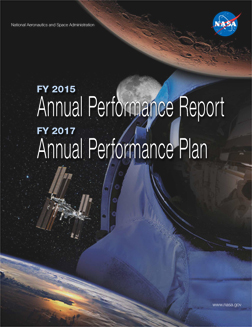- Home
- Agencies
- Department of Agriculture
- Department of Housing and Urban Development
- General Services Administration
- Department of Commerce
- Department of the Interior
- National Aeronautics and Space Administration
- Department of Defense
- Department of Justice
- National Science Foundation
- Department of Education
- Department of Labor
- Office of Personnel Management
- Department of Energy
- Department of State
- Small Business Administration
- Environmental Protection Agency
- Department of Transportation
- Social Security Administration
- Department of Health and Human Services
- Department of the Treasury
- U.S. Agency for International Development
- Department of Homeland Security
- Department of Veterans Affairs
- Goals
- Initiatives
- Programs
Primary tabs
Strategic Objective
Ensure the safety and success of NASA’s missions.
Strategic Objective
Overview
Safety and mission success programs protect the health and safety of the NASA workforce and improve the likelihood that NASA’s programs, projects, and operations will be completed safely and successfully. NASA’s commitment to safety and mission success extends to the American public, our employees, our commercial partners, and our contractors. We do this through an environment of trust and ethical behavior using diverse multidisciplinary teams that foster equal opportunity, collaboration, and continuous learning. We promote technical excellence and competence while ensuring safety, reliability, maintainability, quality engineering, and project management within NASA.
Read Less...
Progress Update
Through the Strategic Review and the Agency’s other performance management processes, NASA reviews recent accomplishments and near term plans for the Agency’s strategic objectives and programs. Program elements managed by the Office of the Chief Engineer, Office of Safety and Mission Assurance, and the Office of the Chief Health and Medical Officer fall under Strategic Objective 3.4. These program elements together are more broadly referred to as “Safety and Mission Success.” These programs work to protect the health and safety of the NASA workforce and improve the likelihood that NASA’s programs, projects, and operations are completed safely and successfully. During the 2015 Strategic Review, NASA found no major changes from the 2014 Strategic Review assessment, and performance measures for Safety and Mission Success are all on track. In the near term future SMS will continue to ensure effective management of NASA programs and operations to complete the mission safely and successfully. Specific performance measures for the next two years can be found in the FY 2016 and FY 2017 Annual Performance Plans.
The Strategic Review also addresses long-term strategic outcomes, alignment, and key management challenges for each strategic objective, as well as across NASA’s portfolio of activities. A challenge for this strategic objective include the fact that NASA’s mission requires working in many unforgiving environments, including the upper atmosphere, low Earth orbit, and deep space. Safety and Mission Success offices work to ensure mission safety and success given these environmental challenges, but Safety and Mission Success faces resource constraints. Some areas of concern regarding SMS disciplines include aviation safety, human factors, non-destructive evaluation, nuclear flight safety, pressure systems, and technical risk and statistical analysis.
For more information, highlighted achievements during FY 2015 are detailed in the FY 2015 Agency Financial Report. Additional details on the FY 2015 performance for supporting Performance Goals and Annual Performance Indicators are provided in NASA’s FY 2015 Annual Performance Report. Information on the strategies for achieving this strategic objective can be found in the 2014 NASA Strategic Plan.








